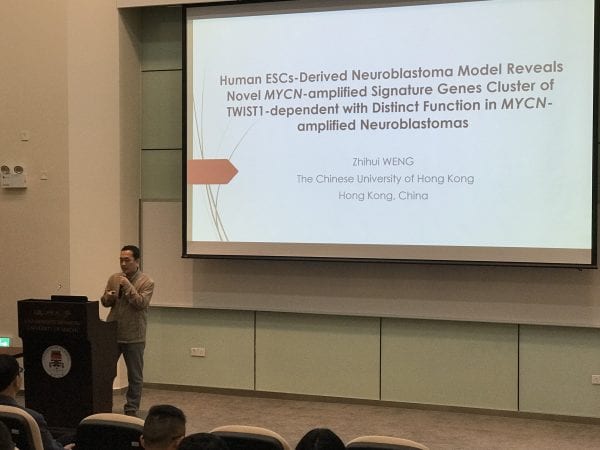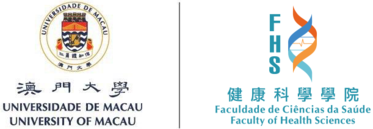
| Talk title | Human Embryonic Stem Cells-Derived Neuroblastoma Model Reveals Novel MYCN-amplified Signature Genes Cluster of TWIST1-dependent with Distinct Function in MYCN-amplified Neuroblastomas |
| Speaker | Dr. Zhihui WENG postdoctoral fellow |
| Date & Time | 26 March 2019 (Thu) 11:00-12:00 |
| Venue | Room G002, N22 Building (University of Macau) |
| Abstract | MYCN-amplification (MNA) shows a high-risk, aggressive and undifferentiated phenotype in neuroblastomas (NBs). However, the oncogenic basis of MYCN-induced transformation in human neural crest stem cells remains unknown. No studies have been reported on the molecular characteristics from MNA-NB initiation model of human origin. Here, we demonstrate that our hESC-NB model resembles human MNA-neuroblastomas at molecular level. By comparing with the clinical cohort, we clarify the pivotal relationship between clinical cohorts and laboratorial genetic studies to identify novel MYCN-downstream target genes for clinical diagnosis and future drug discovery.
On top of that, we further verify specific cluster of genes that significantly correlated with MYCN only in MNA neuroblastomas but cannot be defined between MYCN-amplification and non-MYCN-amplification neuroblastomas. We found that these MYCN-amplification signature genes are regulated by MYCN through a TWIST1-dependant manner. MYCN significantly binds to the non-canonical E-box (CANNTG) sequence of promoters to regulate these genes’ expression which is of TWIST1-dependent. We find that MYCN and TWIST1 directly bind to the non-canonical E-box sequence on the promoter of CD55 and regulated CD55 expression. Loss of TWIST1 leads to the lower contribution of MYCN occupancy on non-canonical E-box sequence of CD55 promoter and downregulates CD55 expression. However, MYCN-overexpression cannot rescue CD55 expression in the context of TWIST1-knockdown. We reveal that CD55 exhibits different phenotypes between MNA and non-MNA neuroblastomas in vitro and in vivo. CD55 functions as a cancer stem cell marker in MNA but not in non-MNA neuroblastomas, denoted that CD55 as a MYCN-amplification signature gene plays key role in MNA neuroblastomas depended on the MYCN-amplification-state. All these data indicate that what we had found enlighten novel therapeutic strategies for MNA neuroblastomas. |

